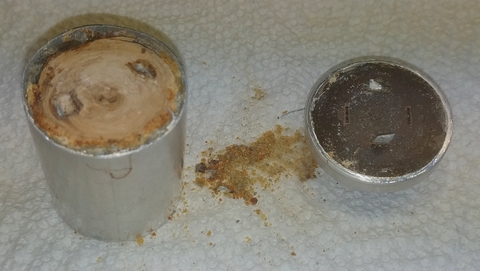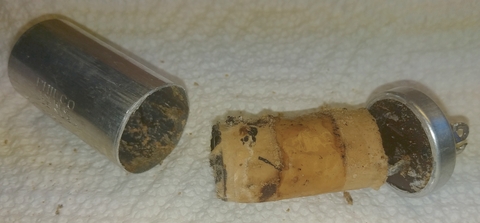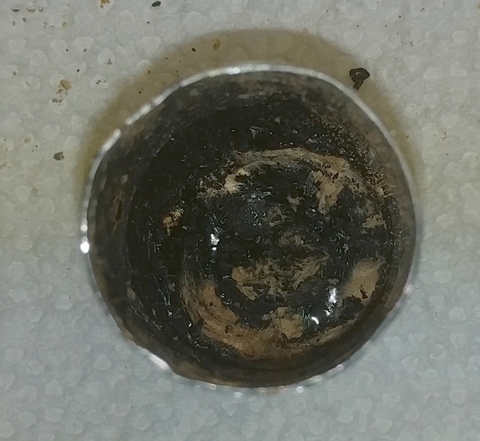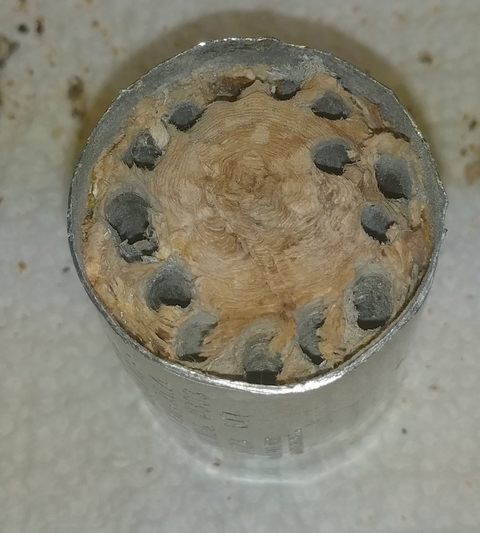03-22-2017, 09:33 PM
Ok, I know there is a lot of info out there on re-stuffing canned electrolytics, but I've never seen anything that shows how to dig out the old remains and clean it up, so I thought I'd show how I did it.
I'm using the method that Warren documented here: http://philcoradio.com/phorum/showthread.php?tid=7533
I had two cans...one a single cap and the other a dual cap.
First, cut the can open using a sturdy sharp knife.

I found that it worked pretty well to try to get a bit of a track cut in all the way around, then focus on one area by rolling the can back and forth on the bench (I had it on an old carpet square on top of the bench) with mild pressure on the knife. I think this rolling action resulted in cutting about 20% of the circumference. Once the blade gets through the can in that area roll it so that you can cut into the next adjacent section. I found that once I got through in one spot the rest went pretty easy. Here's what the larger dual cap looked like when I got it open

And here's what the smaller single cap looked like

As you can see, the smaller one came out of the can fairly easily, but it did leave some black tar like substance in the end of the can.

But the larger one was stuck...tight. I couldn't make much headway trying to dig it out with a knife or screwdriver, and didn't want to risk marring or damaging the can. So I started drilling:

Apparently there is a limit on the number of attachments per post so I'll continue this in another post. If this is frowned upon please let me know.
Rich
I'm using the method that Warren documented here: http://philcoradio.com/phorum/showthread.php?tid=7533
I had two cans...one a single cap and the other a dual cap.
First, cut the can open using a sturdy sharp knife.
I found that it worked pretty well to try to get a bit of a track cut in all the way around, then focus on one area by rolling the can back and forth on the bench (I had it on an old carpet square on top of the bench) with mild pressure on the knife. I think this rolling action resulted in cutting about 20% of the circumference. Once the blade gets through the can in that area roll it so that you can cut into the next adjacent section. I found that once I got through in one spot the rest went pretty easy. Here's what the larger dual cap looked like when I got it open
And here's what the smaller single cap looked like
As you can see, the smaller one came out of the can fairly easily, but it did leave some black tar like substance in the end of the can.
But the larger one was stuck...tight. I couldn't make much headway trying to dig it out with a knife or screwdriver, and didn't want to risk marring or damaging the can. So I started drilling:
Apparently there is a limit on the number of attachments per post so I'll continue this in another post. If this is frowned upon please let me know.
Rich



![[-] [-]](https://philcoradio.com/phorum/images/bootbb/collapse.png)


